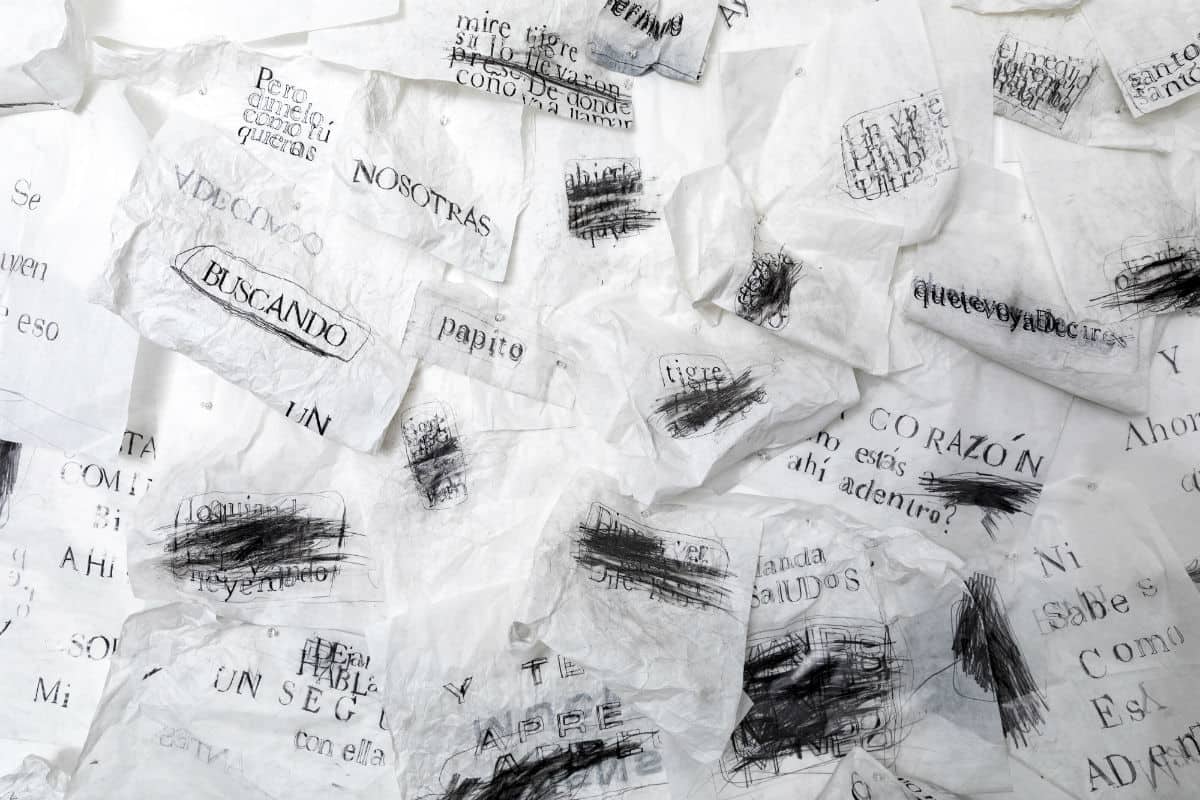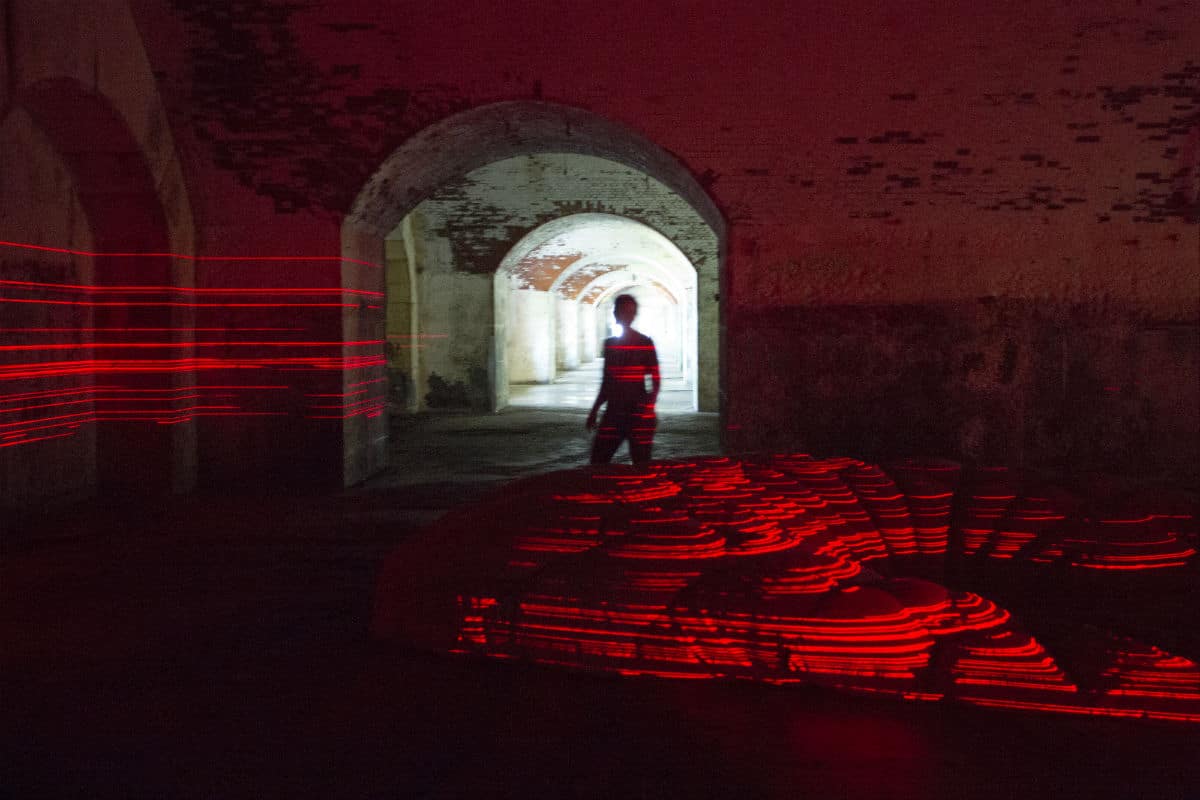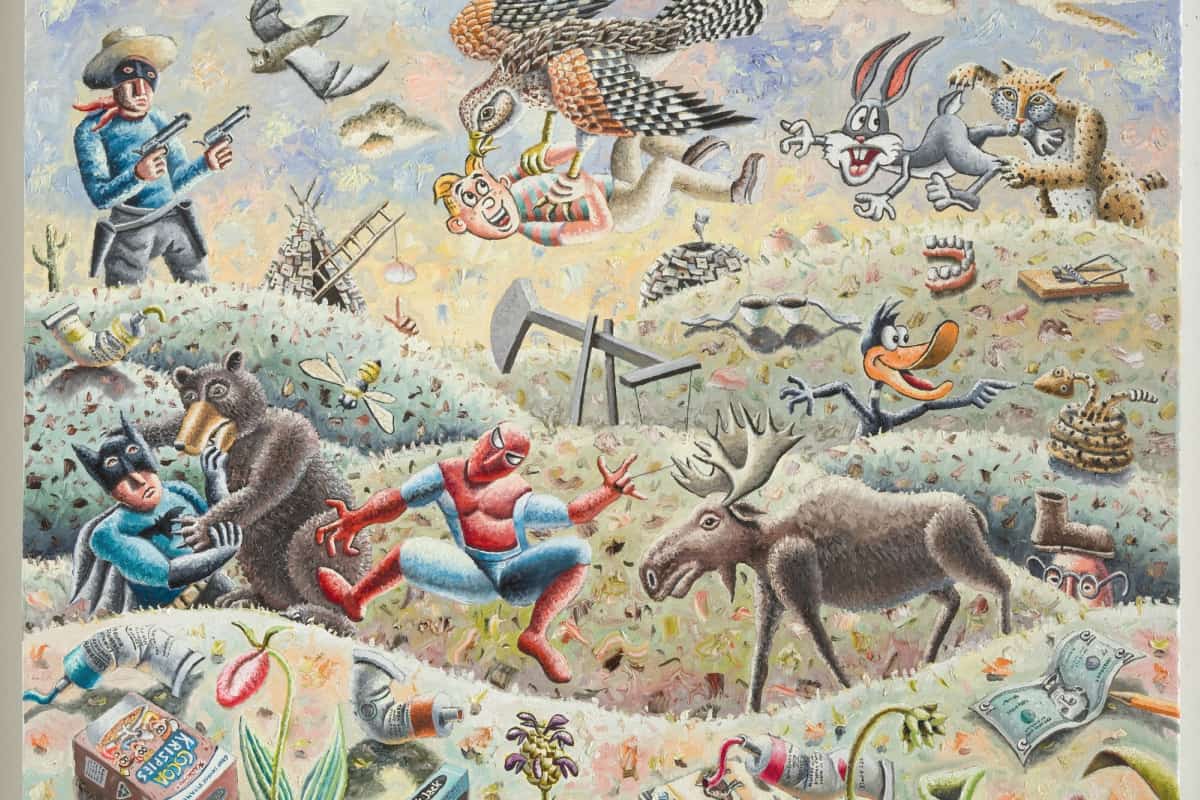The career of Gabriel Sosa as a court interpreter and artist are intimately linked, as seen in his newest exhibit on the court system.
As a court interpreter, Gabriel Sosa is exposed to many narratives and situations he would not otherwise see. In graduate school at the School of the Museum of Fine Arts at Tufts, he decided to research and investigate these issues more incisively. Now, his career as a court interpreter and his career as an artist are intimately linked—both complementing and strengthening each other in powerful ways as he explores the importance of translation, testimony, memory, and social justice.
His latest exhibit, Please interrupt if you don’t understand, on display at A R E A Gallery in Cambridge through October 14th, confronts the use of language in the justice system, the overwhelming nature of the courtroom, and the fallibility of memory. Some of the exhibition’s larger drawings, for instance, use texts based on affidavits prepared by police officers in order to obtain search warrants.
“Due to the lengthy, often repetitive nature of these affidavits, I’ve often wondered how closely these texts are read in their entirety,” Sosa says. “I’m interested in the duality of that language; on the one hand, it’s essential because a warrant can’t be executed without that affidavit; on the other, if it’s glossed over, that language becomes disposable.”
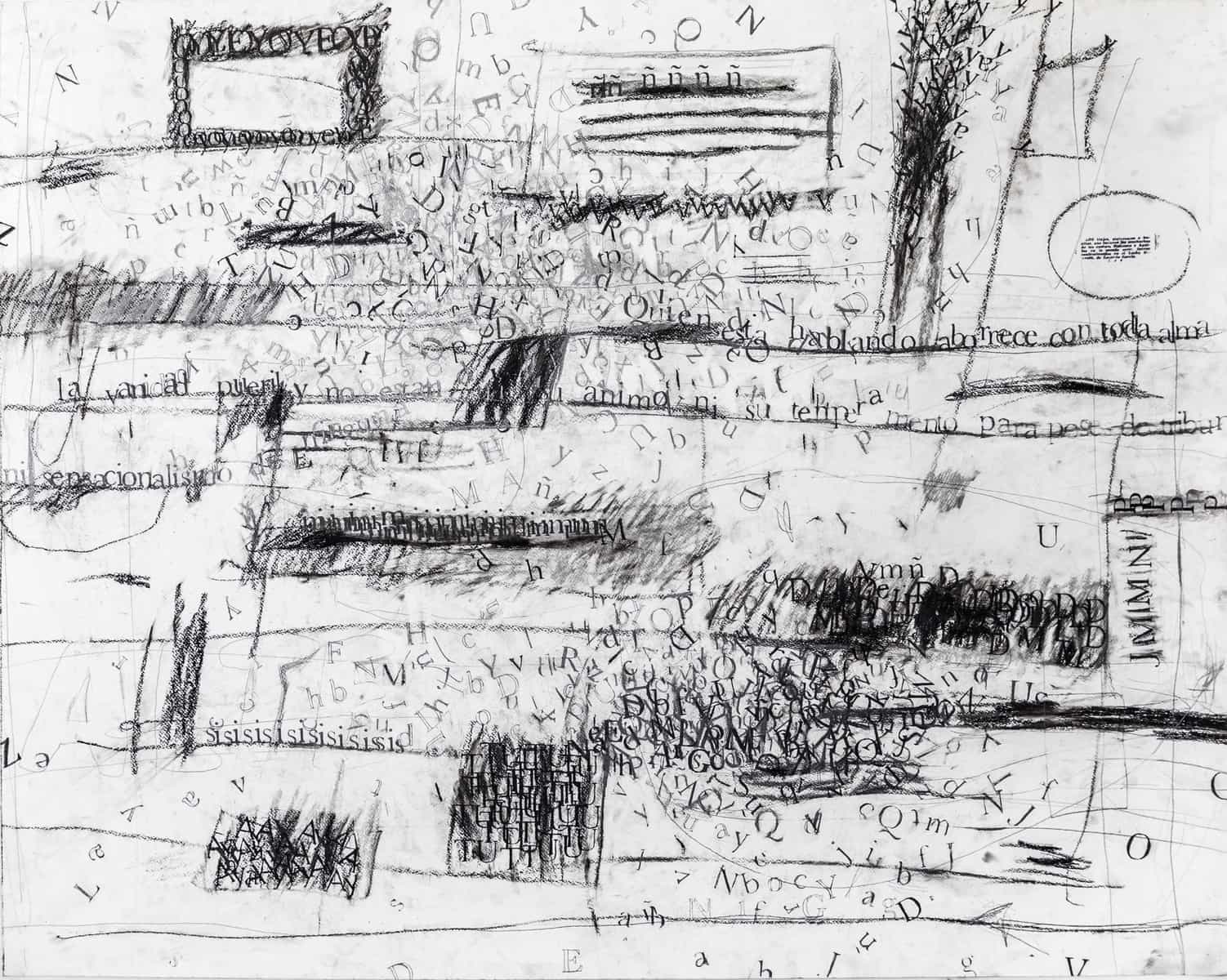
Upon Further Questioning, 2017, charcoal and graphite on paper, 42 in. x 53 in.. Photo © Aníbal Martel
The exhibit also contains a series of drawings created with a typewriter and including fragments from court proceedings that Sosa has either observed or participated in. The drawings show how the typewriter epitomizes much about the justice system—it’s slow, mechanical, old-fashioned, and it only works in a certain way. It’s not malleable or flexible.
“I’m personally invested in this dialogue because I see up close how the justice system works, and in many cases, how it doesn’t work,” says Sosa. “Most people, especially in the art world, aren’t aware of how the court system works. I’m interested in creating awareness for the court system’s nuances, pitfalls, caveats, and opportunities for improvement.”
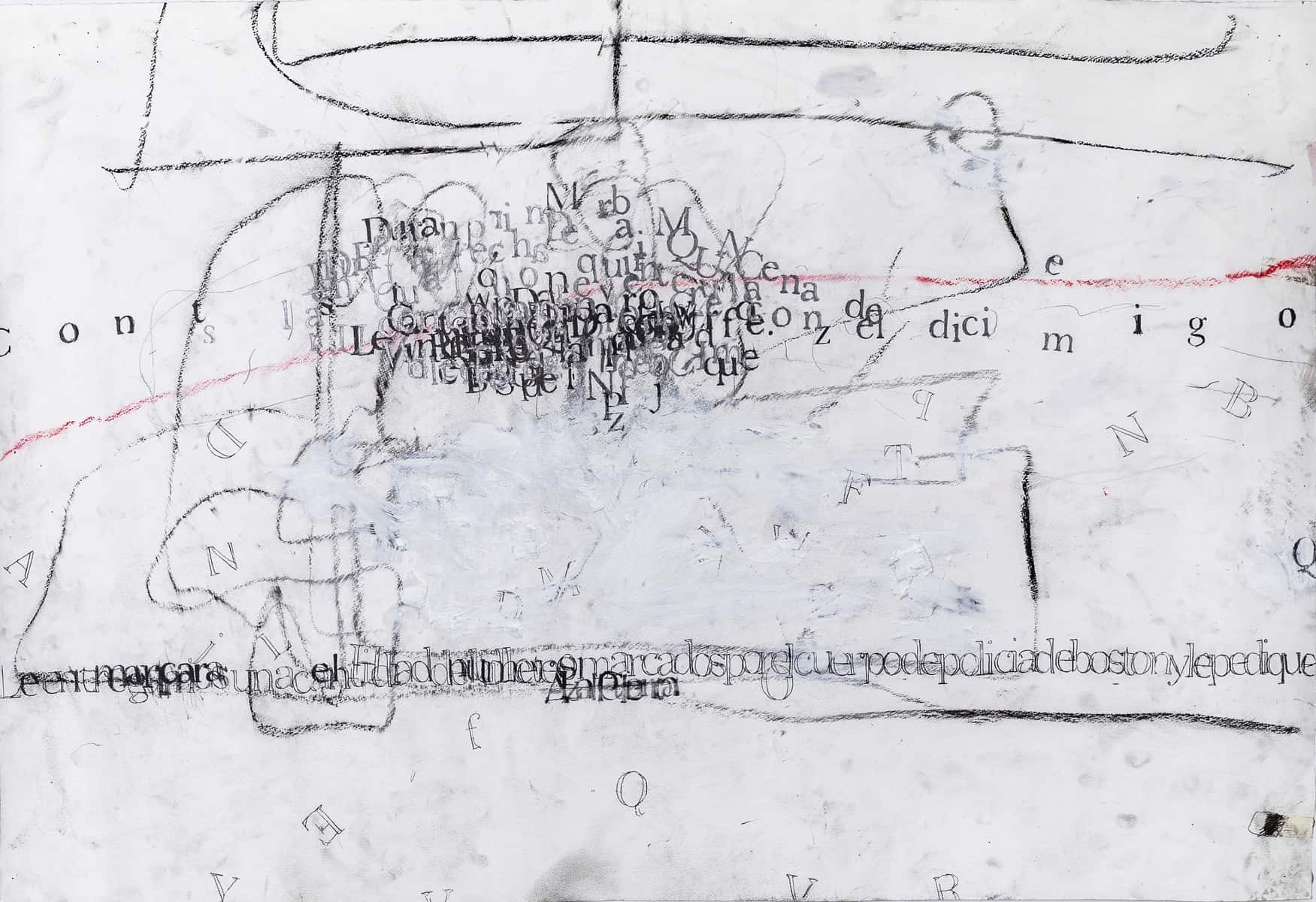
En dos ocasiones durante la primera quincena de abril, 2017, Graphite, oil, and chalk on paper, 30- x 44-© Aníbal Martel
In court, Sosa regularly hears multiple versions of the same event. For each witness, their testimony becomes their truth, and as far as they’re concerned, the way they remember it is the way it happened. Sosa’s exhibition explores how memory transforms, and how despite the dilution of memories with the passage of time, people become more certain about the veracity of those memories.
“Words can lose meaning in different ways,” Sosa says. “These losses of significance become reflected in the drawings where texts become illegible—being layered, erased, and stacked one atop another. They become forgotten, tossed away, and recreated.”
While all of the documents Sosa uses in the exhibit are public, specific names have been eliminated as both a gesture of respect and as a subtle reminder that the situations, feelings, and experiences referred to in these works could happen to anyone, including ourselves.

